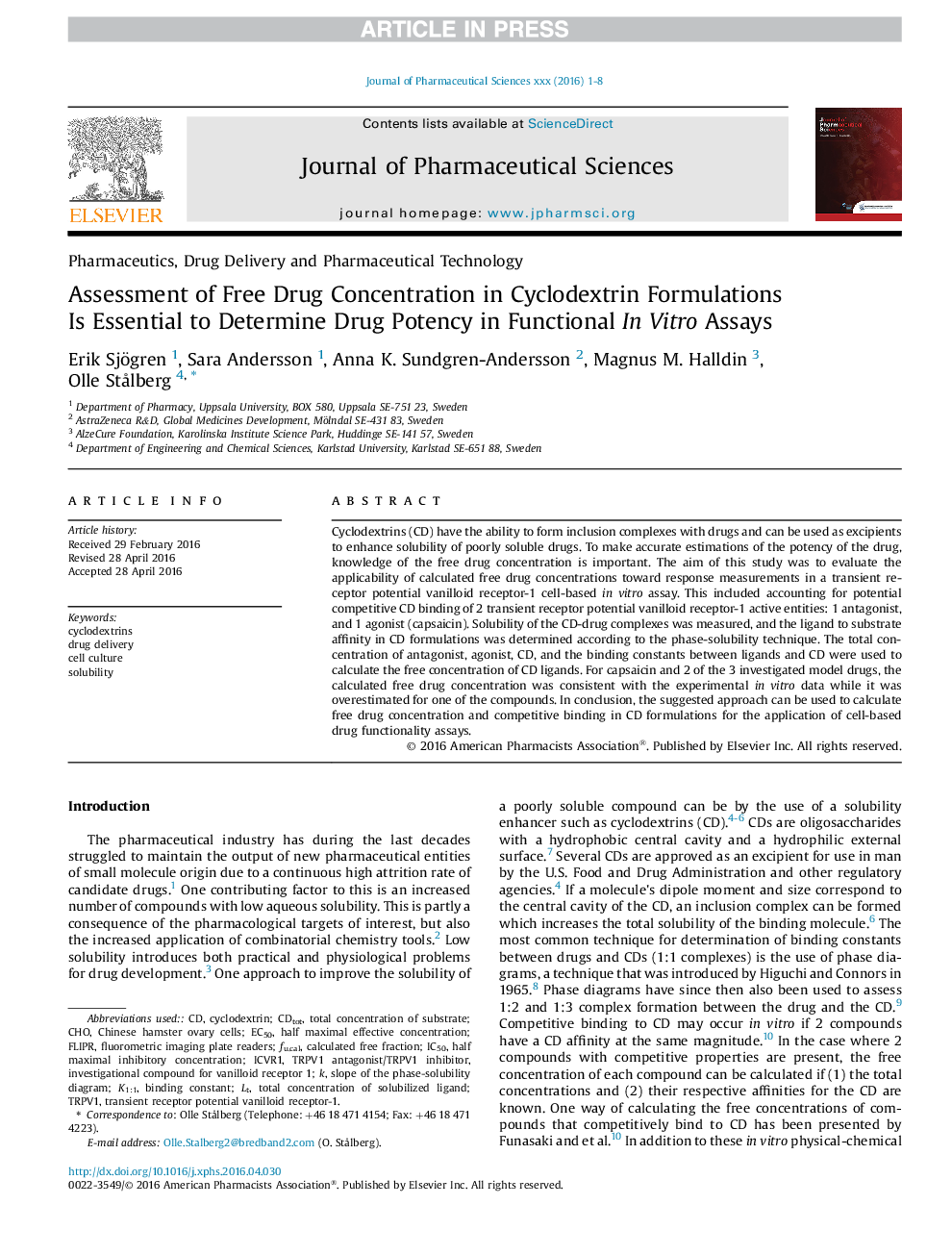| Article ID | Journal | Published Year | Pages | File Type |
|---|---|---|---|---|
| 8515040 | Journal of Pharmaceutical Sciences | 2016 | 8 Pages |
Abstract
Cyclodextrins (CD) have the ability to form inclusion complexes with drugs and can be used as excipients to enhance solubility of poorly soluble drugs. To make accurate estimations of the potency of the drug, knowledge of the free drug concentration is important. The aim of this study was to evaluate the applicability of calculated free drug concentrations toward response measurements in a transient receptor potential vanilloid receptor-1 cell-based in vitro assay. This included accounting for potential competitive CD binding of 2 transient receptor potential vanilloid receptor-1 active entities: 1 antagonist, and 1 agonist (capsaicin). Solubility of the CD-drug complexes was measured, and the ligand to substrate affinity in CD formulations was determined according to the phase-solubility technique. The total concentration of antagonist, agonist, CD, and the binding constants between ligands and CD were used to calculate the free concentration of CD ligands. For capsaicin and 2 of the 3 investigated model drugs, the calculated free drug concentration was consistent with the experimental in vitro data while it was overestimated for one of the compounds. In conclusion, the suggested approach can be used to calculate free drug concentration and competitive binding in CD formulations for the application of cell-based drug functionality assays.
Keywords
Related Topics
Health Sciences
Pharmacology, Toxicology and Pharmaceutical Science
Drug Discovery
Authors
Erik Sjögren, Sara Andersson, Anna K. Sundgren-Andersson, Magnus M. Halldin, Olle StÃ¥lberg,
